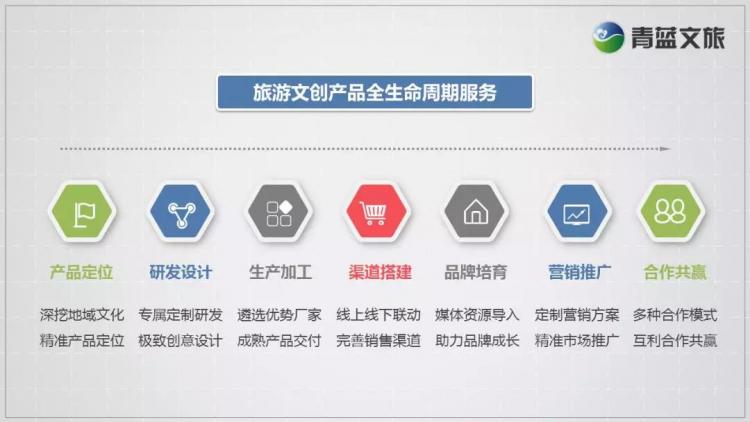
Rich cultural relics are a unique advantage in the development of China’s cultural and creative industries. Up to now, my country has 50 world cultural heritage sites, ranking first in the world. 5,136 museums, 108 million pieces (sets) of cultural relics, 1.008 billion museum visitors per year, 39 world-class intangible cultural heritage items, 1,372 national-level intangible cultural heritage items, and 13,087 provincial-level intangible cultural heritage items. These cultural relics have a strong cultural heritage Influence, recording Chinese-style aesthetic and cultural appeals. To develop, cultural and creative enterprises must know how to use these superior cultures and transform them into their own creative capital.
In terms of Chinese culture, everyone is a big capitalist, but how to use it? How to convert? It is something that everyone needs to learn now.
Six points for traditional cultural IP to become creative capital:
1 Source of Creation: Cultural Mining and Value Extraction
Civilization and culture are the eternal source of material for design and creation. Designers must cultivate such a habit and ability to explore and refine unique themes and cultural elements as the cornerstone of their own originality in culture and civilization. From function >> color >> Materials>>Style>>Cultural angle to deepen understanding step by step.

Take the Forbidden City Cultural and Creative Industry as an example. In 2018, the Forbidden City’s cultural and creative income was 1.5 billion. There are more than 10,000 products ranging from cultural relics exhibitions to peripheral development, from stationery and daily necessities to lipsticks, and even hot pots. Behind this is the strong creative team. Ability to deconstruct culture. Forbidden City Cultural Creation systematically sorts out, decomposes, and reconstructs the elements of the Forbidden City, and then substitutes them into modern life through design.

2 Designing IP: Abstraction and Restoration
Although there are thousands of forms of cultural expression, behind them are the supporting aesthetics and philosophical ideas. Grasping the ideological roots of traditional art is the core of deconstructing and reorganizing cultural elements.

3 Function Reengineering: Returning to Life is Integration
Good design should be expressed in good form, and good products should be able to better integrate into modern life and obtain the nutrition of continuous production in the market. The bridge between the needs of life and the needs of life, so as to achieve great products.

At present, traditional IP has many excellent cases and achievements in industrial design, fashion design, architectural design, film and television drama creation, publishing industry, animation and game industries. The combination of traditional cultural IP and modern life, from these successful cases Practical solutions can also be found in .
4 Cooperation and sharing: learning to cooperate with IP owners
Obtaining superior IP is half of the success of the creative industry. A large number of cultural heritage museums in China are the centralized storage places for these IPs. The research departments of various museums have completed the sorting out of cultural relics and culture, Research and sorting work, these achievements are the huge treasure house and magic weapon of the cultural and creative industry. The acquisition of superior IP resources requires the knowledge of cooperation and joint development with IP owners, so as to achieve sustainable utilization.

 5 Product Update: Cultural and Creative Supply Chain and Resource System
5 Product Update: Cultural and Creative Supply Chain and Resource System
Good cultural and creative products need the support of upstream and downstream supply systems. Like-minded partners who share the same language are essential elements to ensure good products and good results. Actively collecting and finding suitable resource systems is the key point that cultural and creative enterprises must adhere to in order to win .

6 Operation model: development and optimization of cultural and creative business models
Although business models are all summed up, and the one that suits your company is the best, there is never a shortage of excellent cases in reality. In the same soil, good models always have similar characteristics. After more than ten years of development in China’s cultural and creative industry, it has cultivated a lot of good experience in the development and operation of traditional cultural IP. It is successful to learn from it and find a suitable method. Good shortcut.


Source: Lungmo (Lungmo)



